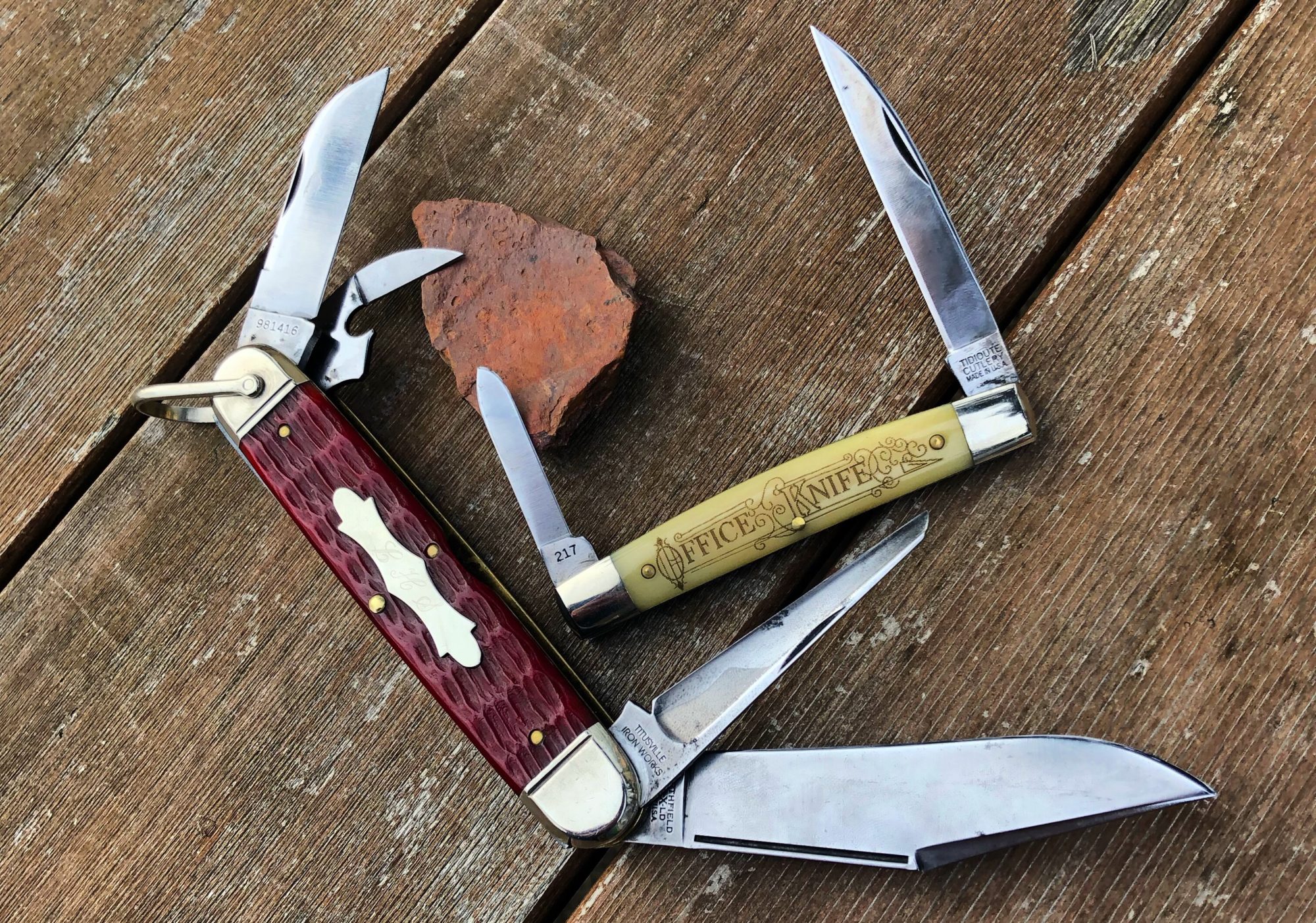This article will provide a short overview of the Great Eastern Cutlery #97 Kifer Cutlery Classics Special Factory Order Northfield Allegheny. I received this knife from Gary Kifer of CutleryClassics.com at the 2019 Rendezvous to have, test, and review. I was happy to get a user #97, as I thought it would make a great larger slipjoint carry.

I had some experience with the #97 Allegheny pattern through the Allegheny Mountain Knife Collectors Association 2019 club knife (you can find my article about that knife at this link). I really liked the knife from an aesthetic perspective, but because it is a club knife I reserved it as a collection piece. So I was excited, and looking forward to putting it through its paces, when Gary gave me this one.

To give you the run down on what the knife is; it’s a 4.75″ closed slipjoint with a saber ground clip point blade and coke bottle frame. You can learn more about the coke bottle pattern in my article on the #06 Pemberton at this link. The blade has a double pull, meaning it has both a long pull and a nail nick. The handles are Amber Jigged Bone. It has Cutlery Classics’ trademark shield. The bolster is engraved “23” out of a run of 99. All of these characteristics brought together make it a great reproduction of a vintage large coke bottle hunter.

GEC made several versions of the Allegheny pattern in this first run, with a bunch of handle materials and two different blade grinds, and I think this is one of the best of them.
Not everyone likes a saber grind or the double pull, but I really like its look and the fact that it hearkens back to vintage coke bottle hunters. Although the saber grind can sometimes slice less smoothly through dense materials than a full flat grind or high hollow grind, it has performed well on all kinds of tasks (from breaking down cardboard to gutting fish). I also like the practicality of having both the nail nick and long pull. The nail nick being at the end of the blade provides more leverage, while the long pull will remain above the frame (allowing the blade to be opened) long after the nail nick drops below the frame from sharpening and filing the kick. Of course, most people won’t sharpen the knife enough times for this to be relevant, but as these are heirloom quality knives it’s good to know it could be passed on and continued to be used for years to come.
I was also pleasantly surprised by how much I like the bone color and jigging pattern. The color is a nice malty wheat color, and I think it will continue to mellow and improve with age. I also really like the jigging, as it’s not as uniform as some of GEC’s jigging patterns and it actually provides some grippiness in the hand. Some people found the pull on these #97s to be lighter than they expected on such a big knife, and mine is light for a GEC at about a 4, but the action is very smooth and snappy with great walk and talk. On a user, I think there’s a balance between a pull being too strong to be convenient to open and too weak to keep the blade fully open in use. This knife falls nicely between.
Basically, it’s another well built and classic looking Great Eastern Cutlery that’s equally suited as a user or a collection piece.

I have used this knife a lot since getting it, and I’m enjoying it more and more. It’s certainly a big knife for a slipjoint, but I’ve found it easy to carry and it’s always nice to have that extra blade length. The #97 Northfield Kifer Cutlery Classics Special Factory Order is another top notch knife from Great Eastern Cutlery. If you’d like to get one for yourself, there are still some available on the Cutlery Classics site at this link. Thanks again to Gary for providing this one!

























